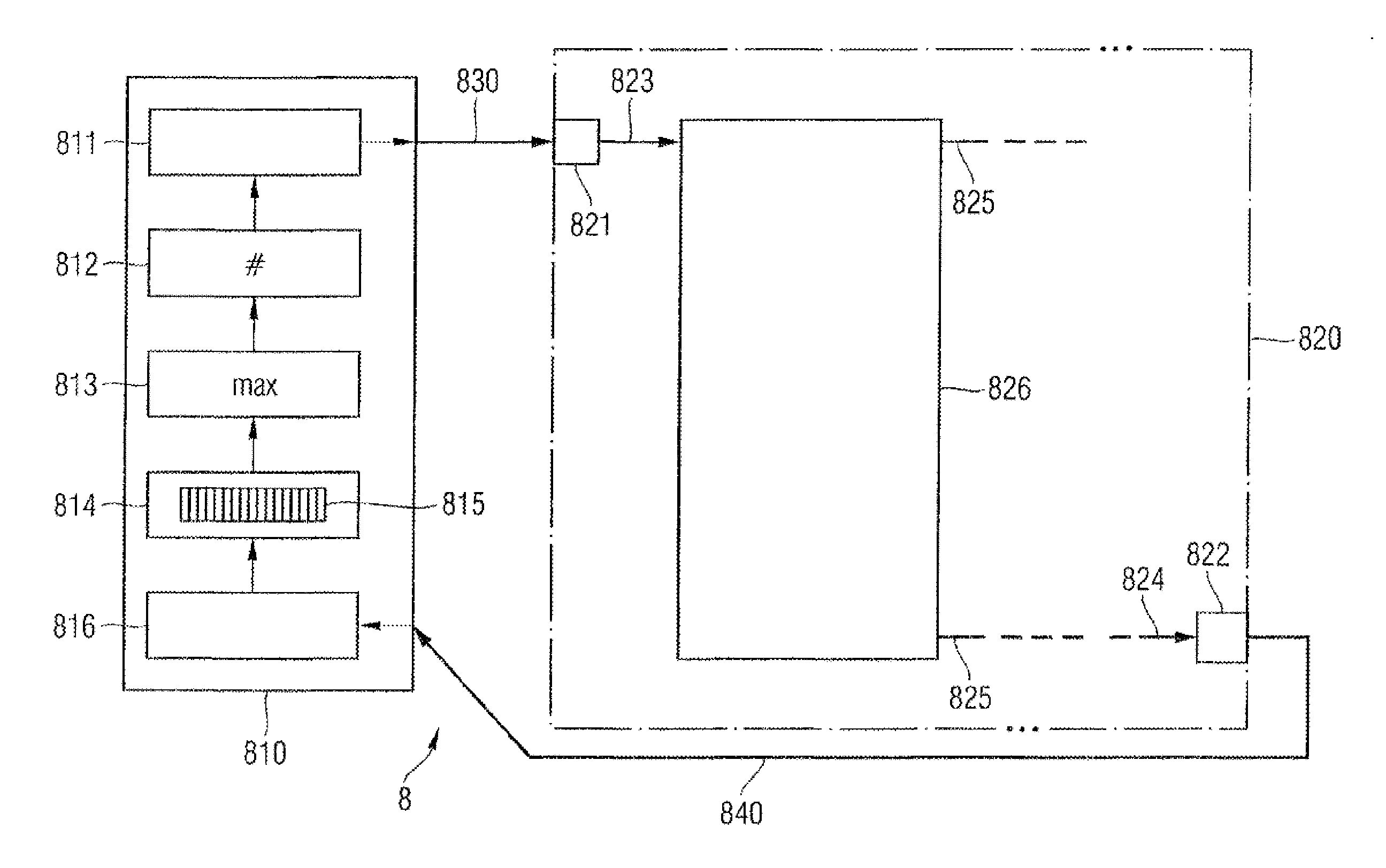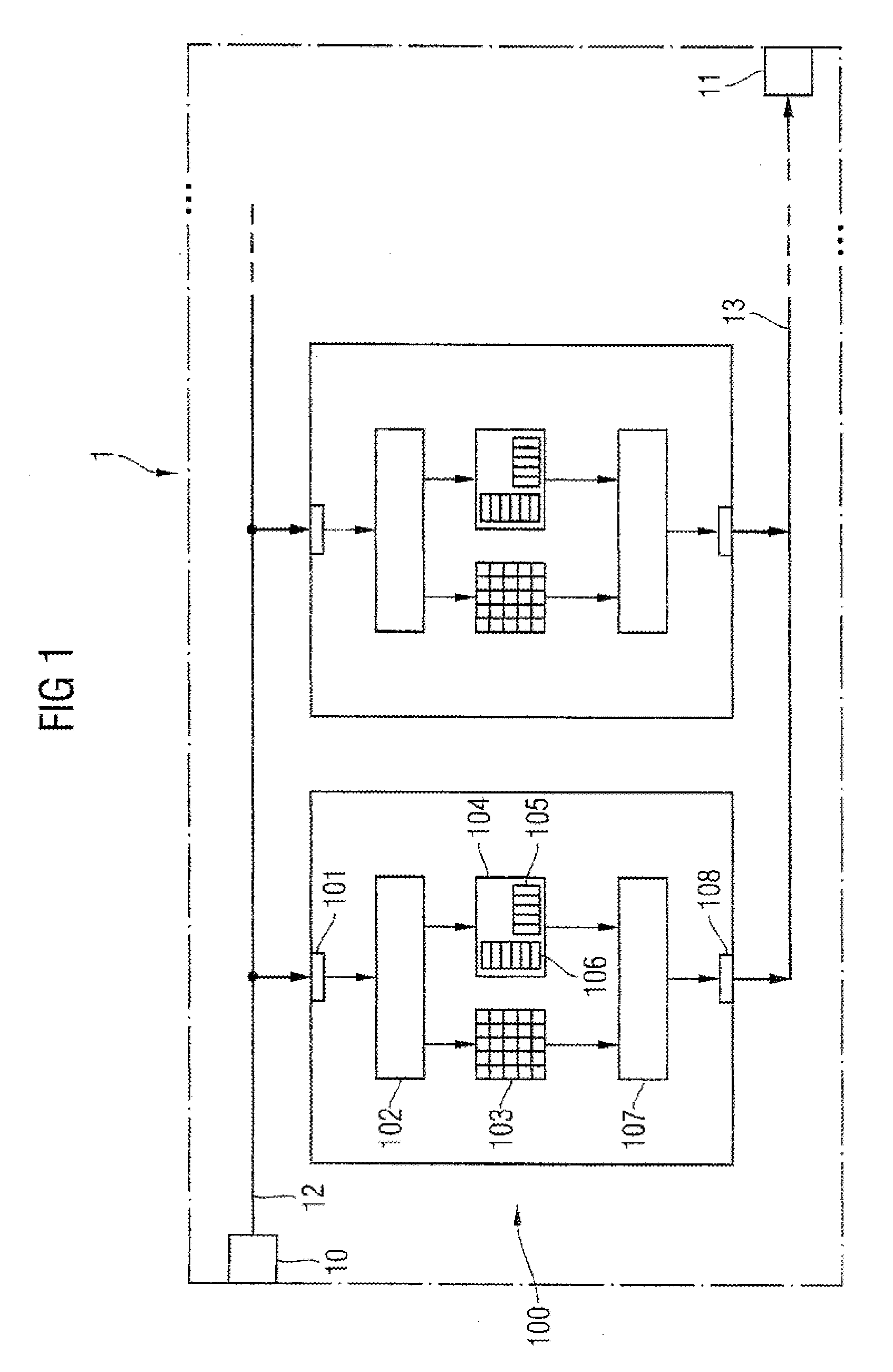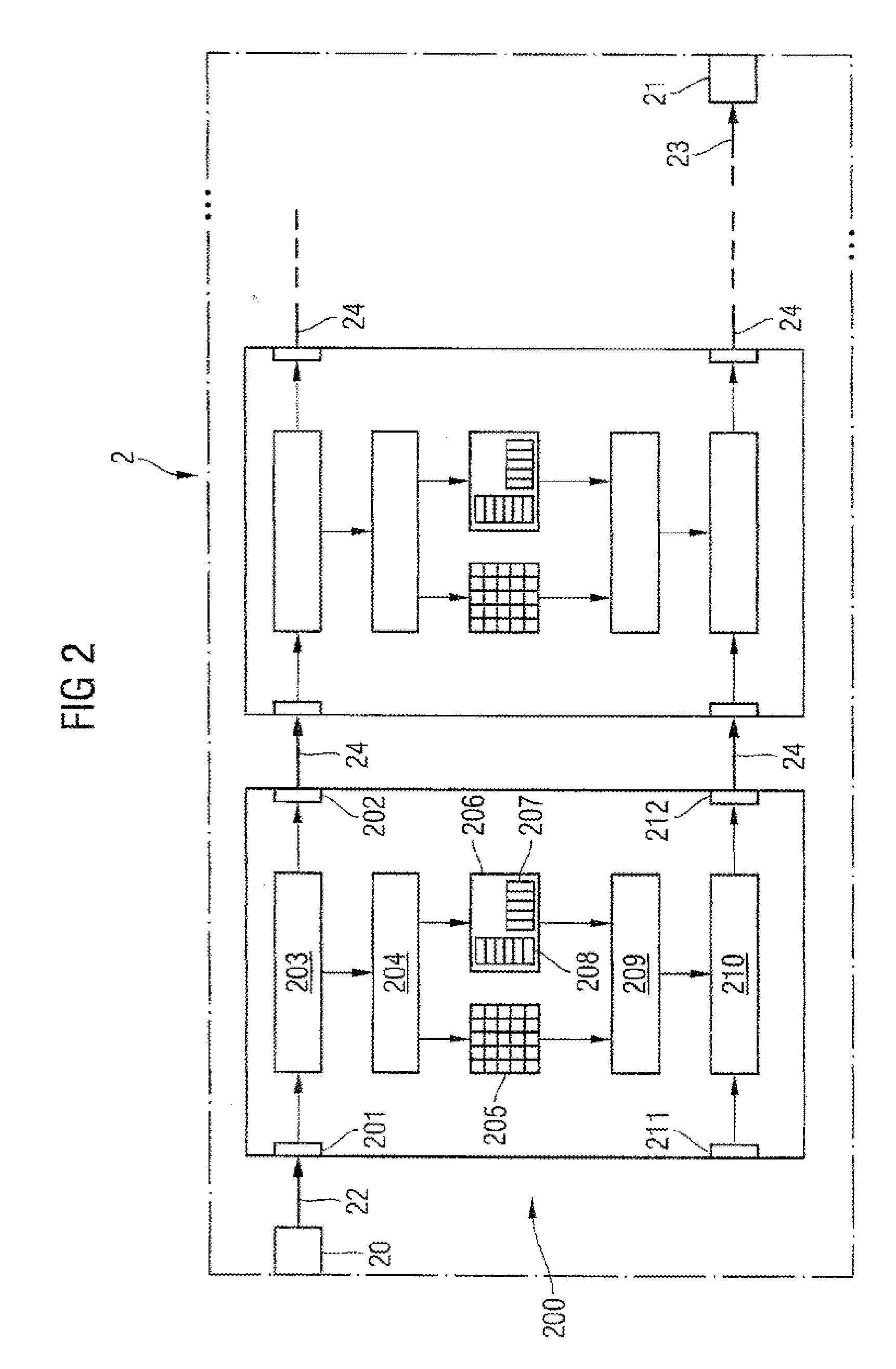Memory device, memory system and method of operating such
a memory device and memory technology, applied in the direction of information storage, static storage, digital storage, etc., can solve the problems of inability to produce identical devices, individual devices are subject to process-related variances, and the demand for memory capacity cannot be fulfilled by a single device, so as to prevent collisions and prevent too little loading of signal paths
- Summary
- Abstract
- Description
- Claims
- Application Information
AI Technical Summary
Benefits of technology
Problems solved by technology
Method used
Image
Examples
first embodiment
[0064]FIG. 1 shows a diagrammatic representation of a memory module 1 comprising at least two first memory devices 100. The memory module 1 receives command data, e.g. from a memory controller or a microprocessor, via a command data input 10. The command data are forwarded from the command data input 10 via a first signal line 12 to the memory devices 100. According to this first embodiment of the present invention, any form of parallel circuit is provided. As shown here, the first signal line 12 may comprise branches to the first inputs 101 of the memory devices 100. The command data thus reach the first input 101 and are forwarded to the input circuit 102 within a memory device 100. The input circuit 102 provides drive signals for a memory cell array 103 and a timer 104. The memory cell array 103 outputs data in dependence on drive signals provided to it and provides them to the output buffer 107.
[0065] The timer 104 drives the output buffer 107 in such a manner that it outputs th...
second embodiment
[0067]FIG. 2 shows a diagrammatic representation of a memory module 2 according to the present invention. The memory module 2 comprises at least two memory devices 200. A memory device 200 has a first input 201, a first transfer unit 203 and a second output 202 for receiving command data and for forwarding the command data. The transfer unit 203 correspondingly forwards the command data to the second output 202 and / or to the input circuit 204.
[0068] Drive signals are provided by the input circuit 204 to a memory cell array 205 and a timer 206. The timer has a register 207 and a counting unit 208 in order to drive an output buffer 209 in such a manner that it outputs the data read out of the memory cell array 205 after the expiry of an adjustable time interval after the provision of the drive signals. The register 207 and the counting unit 208 which counts clock cycles of a clock signal are used for determining the adjustable time interval and its expiry.
[0069] The memory device 200...
third embodiment
[0072]FIG. 3 shows a diagrammatic representation of a memory module 3 according to the present invention. Analogously to the preceding embodiment, the memory module 3 comprises a command data input 30 and a first signal line 32 for forwarding command data from, for example, a memory controller or microprocessor to memory devices 300 of the memory module 3. The data read out of the memory devices 300 are forwarded to a data output 31 of the memory module 3 by a second signal line 33. A module signal line system 34 forwards both the command data and the data read out between the memory devices 300. The memory devices 300 comprise a first input 301, a first transfer unit 303, a second output 302, a second input 314, a second transfer unit 313, and a first output 315 for the through-conduction of the command data and the data read out. The command data forwarded by the first transfer unit 303 to an input circuit 304 are used for providing drive signals for the memory cell array 305, a t...
PUM
 Login to View More
Login to View More Abstract
Description
Claims
Application Information
 Login to View More
Login to View More - R&D
- Intellectual Property
- Life Sciences
- Materials
- Tech Scout
- Unparalleled Data Quality
- Higher Quality Content
- 60% Fewer Hallucinations
Browse by: Latest US Patents, China's latest patents, Technical Efficacy Thesaurus, Application Domain, Technology Topic, Popular Technical Reports.
© 2025 PatSnap. All rights reserved.Legal|Privacy policy|Modern Slavery Act Transparency Statement|Sitemap|About US| Contact US: help@patsnap.com



